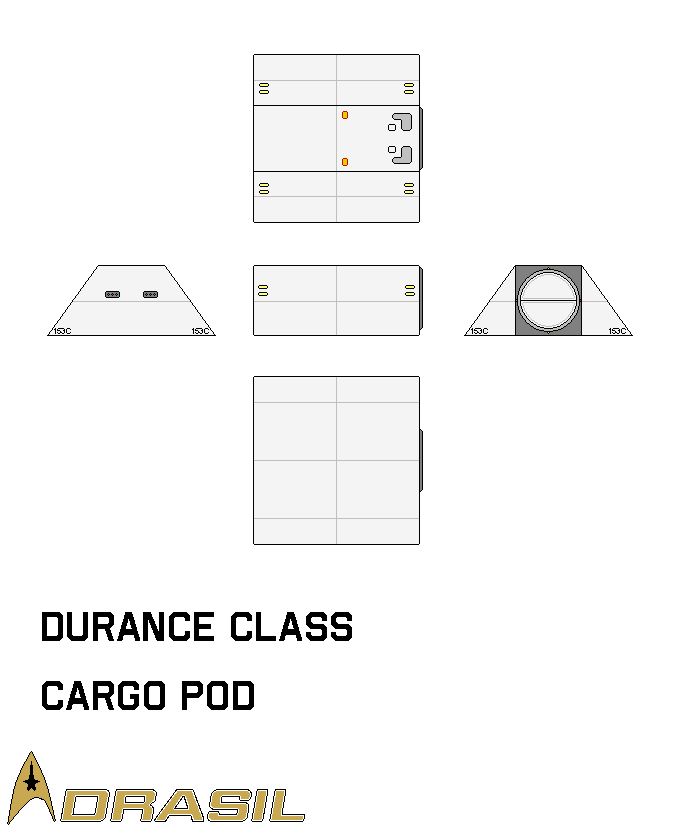HOME | DD
 RevancheRM — Durance style cargo container (2130)
RevancheRM — Durance style cargo container (2130)

#starfleet #startrekstarship #timosaloniemi
Published: 2018-08-06 22:58:19 +0000 UTC; Views: 1064; Favourites: 11; Downloads: 27
Redirect to original
Description
This series on the Durance class includes the following: Durance class transport (config 2) (2130) , Durance class transport (config 3) (2130) , Durance style cargo container , Durance class transport (config 4) (2130) , Aberdeen subclass escort cruiser (~2150s) , Rio Verde subclass (~2150s) , Manheim subclass (2150s) , Durance class transport (alt wartime fit) (~2156) , Redstone subclass transport (~2156) , Chryse subclass transport (~2158) .
Image provided by: Adrasil
Original impressions from: Todd Guenther (Starstation Aurora) and captshade
History from: Hobbyist's Guide to the UFP Starfleet, by Timo Saloniemi
Variant blueprints: Access via Adrasil's Download button
Featured in: Starship Recognition Manual #293
The cargo container designed exclusively for the United Earth Starfleet's Durance class transport in 2130 carried up to 12,400 metric tons apiece. Variance in mass distribution due to the attaching of multiple containers aboard the transport was handled by a balancing system that moved propellant and ballast between tanks in the spine of the optional dorsal support structure (the triangular object just forward of a lone container placed on the stern section of the ship). When a ship visited an orbital port without cargo handling equipment, the versatile grappling arms would un-stowed from the forward side of the structure and maneuver the pods away from the ship; if the Durance carried the optional shuttlebay, then the two cargo handling pods helped reduce the transition time, as well as improved the safety of the evolution. When energized, magnetic clamps on the ship would close position and lock on to the metallic portions of the container's hull.
These cargo containers had enormous hatches on their rear side, reminiscent in style and function to personnel and shuttlepod ports found on starships. However, rarely were these pods pressurized and the massive hatches were intended to allow for the ingress and egress of cargo pods and workbees retrieving or stowing the various items in the container's inventory. Temperature management systems, power, and required fluids were husbanded directly from the transport itself, but restricted to only one pod. When a single pod was carried, these services came through a direct connection of the ports from the dorsal support structure. In order to carry two pods, the Durance would be required to shed the structure, and the services came directly to the forward container from the rear side of the forward hull section. Trailing containers, attached by the magnetics contained within the rear-side seals, could never receive such services. As was standard, supply runs would often shuttle containers to their destination, unload them, and then depart with pre-loaded containers.
Note: this image is the first known view of the Durance style cargo container as an individual component.
Would you like to learn more about this? Download the free Hobbyist's Guide to the UFP Starfleet , a three-volume, 1236-page history of space flight, by Timo Saloniemi.
For an extremely rich gallery of Star Trek starships and vessels from other universes, check out my partner, Adrasil , here on DeviantArts.























